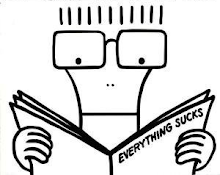You'd figure that the halfway point of a season would be more notable than it is in baseball. There's no real divider, since the All-Star break comes a bit later than normal this season. The 81-game mark is close, but the 81st game seems no different than the 82nd, not unless you're counting. It's no different for injuries—they're not up, actually, it just seems like it. The spectrum is about the same as in any other year. The Cards, Yankees, and Marlins have already lost more than 700 days to the DL, while the Dodgers have spent $22 million on the players they have on the DL. On the other side, the White Sox are leading in terms of general health, losing only 120 days to what are mostly insignificant injuries; they are one of three teams, along with the Royals and Marlins, who have lost less than $2 million so far. I'll wait until the end of the season to see how DXL and Injury Cost work out, since even half a season is too small a sample size to gauge its usefulness in analysis...Wow, the Dodgers have $22M in injuries? While it is obvious that Jason Schmidt is taking up a great deal of that, $22M is a lot of money to have doing nothing for your club.
However, this article is not about Jason Schmidt, rather, it is about Jeff Francoeur, whom Carroll discusses and reflects upon another authors work. Carroll writes,
The interesting part of Francouer needing one contact isn't that he got it done, as detailed well by Dave O'Brien, but that it took this long for the Braves to figure out what he needed and then get it done. It's not clear if Francoeur didn't tell them he wasn't picking up the rotation of the ball, but it's been clear for a while that his odd day/night split had to have some sort of explanation. Optics is one of the lesser-known areas in sports medicine, so a lot of people will be watching Francoeur and checking their stat page for players with day/night splits of their own.And what do these day/night splits say (AVG/OBP/SLG)?
Career:
Day - 292/325/520
Night - 267/312/422
| Game Time/Year | 2005 | 2006 | 2007 | 2008 |
| Day | 341/382/671 | 275/288/565 | 273/303/390 | 321/381/547 |
| Night | 280/314/491 | 253/295/397 | 301/351/466 | 210/259/322 |
As you can see from Frenchy's career line, he is a superior hitter during the day. Most notably from his power numbers. That is, Francoeur's career Isolate Power (ISO) figure sits at 228 during the day and 155 at night. In other words, Francoeur is well above average in terms of power during the day, and right around average at night. A substantial difference for a young hitter.
However, let's discover how Francoeur performs in terms of his strikeout and walk rates during these splits. This should help notice whether he truly is seeing the ball differently. Strikeout and walk rates respectively:
Career
Day - 19.1/4.3
Night - 20.5/5.4
| Game Time/Year | 2005 | 2006 | 2007 | 2008 |
| Day | 20.1/4.9 | 19.0/2.0 | 19.3/4.3 | 17.9/8.5 |
| Night | 20.5/5.4 | 23.2/4.0 | 20.4/7.5 | 17.6/4.9 |
These results aren't exactly what you would call, statistically relevant, however they do begin to tell us a story. Francoeur, undoubtedly strikes out a lot, and definitely too much when one considers the amount of walks he draws. But as you can see, he makes more regular contact during the day then he does at night. Conversely, Francoeur draws more walks at night then he does during the day. Thus, I would wager that he isn't having much of an issue picking up the ball at different times of the day.
All that being said, it appears as if Francoeur does have a noticable difference between night and day and this is clearly not a new occurence. This, despite David O'Brien of the Atlanta Journal-Constituion using 2007 as his sample when asserting,
If the vision is causing problems in night games, it's a recent development. Last season he hit better at night — .301 with 16 homers and a .466 slugging percentage in 116 night games, and .273 with three homers and a .390 slugging percentage in day games.Clearly 2006 and 2005 did not make a difference?
As Carroll mentions, it will be interesting to keep note of players whom have interesting day/night splits. I have always been a proponent that certain hitters do in fact have superior warm v. cool weather performances, suggesting it to be natural for a player who grew up in Florida, Texas, California, etc to struggle with the elements we frequent early in the baseball season up north.
Let's keep track of how Francoeur does for the rest of the season. Since Monday, Francoeur has played in 2 night games and 1 day game, here is his line thus far:
Day - 333/500/333
Night - 286/286/286
Too early to tell, obviously!
Update - 06/27/08 - 8:30 PM EST
Frenchy has a beard and according to Turner South broadcasters feels 'refreshed' and 'relaxed'. Apparently he spent Thursday on the links and is ready for the second half. My expert opinion on this, it must be the beard.


No comments:
Post a Comment